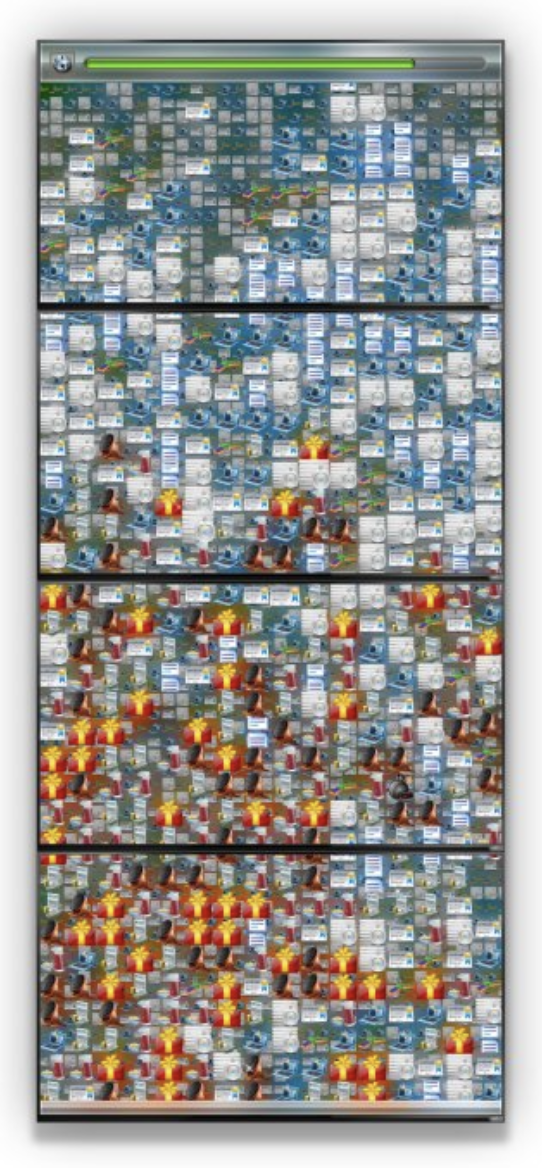Tabor Robak
(Portland, Oregon, 1986 - )
Free-to-Play Lite
2013
4-channel HD video, networked media players, original software
120 x 48 in. (304.8 x 121.9 cm)
Collection of the Akron Art Museum
Gift of Zoë and Joel Dictrow
2022.11
© 2022 Tabor Robak
More Information
Presented as a looping video on four large-scale monitors, Free-to-Play Lite resembles an endlessly self-playing version of the “match three” style games like Bejeweled and Candy Crush that one might find on a mobile phone. Games of this sort task players with finding and lining up sequences of matching symbols so that they are removed from play, making room for more symbols that quickly crowd the screen. Tabor Robak designs the lush, seductive visuals of animations like this one to hypnotize his viewers, but also to encourage reflection on the addictiveness of screens in day-to-day life. Match three games, with their steadily perpetual call to pattern recognition and their satisfying explosions and graphical effects are addicting to be sure, and indeed they are designed with that quality in mind. Describing these games, Robak remarks: “They’re mesmerizing. It’s easy to completely forget yourself when you’re playing one of those games—you totally become a robot.” These qualities make match three games a ripe target for parody and critique, but also an effective window into the motivations behind design choices in all sorts of other digital interfaces and experiences—from social media to online shopping, video streaming, and beyond—that are not always so obviously addictive or manipulative. To make the work, which he describes as a “moving painting,” the artist purchased a package of pre-made digital icons and inserted them into a self-playing game that he coded and then recorded.



.jpg)
.jpg)